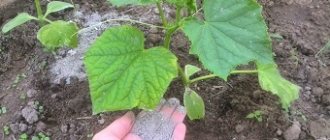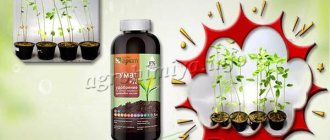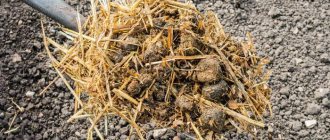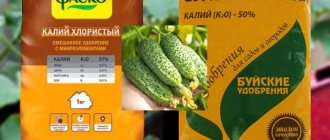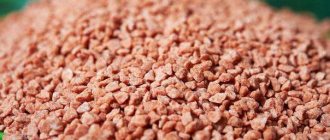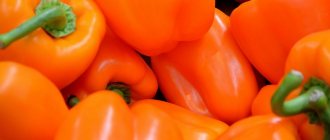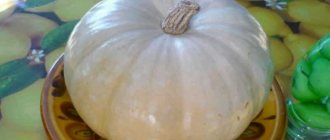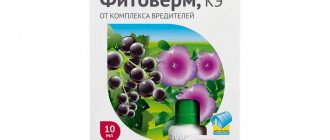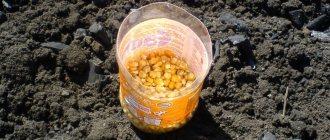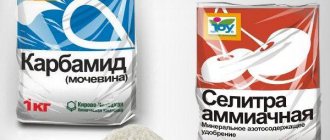Natural sources of nitrogen for plants
In the natural environment, nitrogen is not lost anywhere. It circulates in a circle, and no matter how wildly the trees and grass grow in a field or forest, they have enough nitrogen. The circulation of this element in nature is carried out according to the following scheme:
- plants take nitrogen out of the soil and use it to build their protein molecules and amino acids;
- animals eat plants and transfer nitrogen from their cells to their own to build their own proteins and amino acids;
- animals and plants die and are decomposed by soil microorganisms, which convert their remains into humus, then mineralize and return nitrogen to the soil.
In fact, the nitrogen cycle is more complex, but even this simplified version explains why “wild” lands are not depleted. Moreover, the longer a natural community exists, the richer the soil becomes in nitrogen and other elements.
The situation is completely different on “cultivated” agricultural lands. Traditional agricultural technology involves complete removal of crop residues, thorough weeding and removal of green mass from the field or bed. The earth is plowed or dug deep with the formation being turned over, as a result of which soil microorganisms die. The nitrogen cycle process stops. Planted crops take nutrition from the soil, but return nothing to it.
Important! The use of nitrogen fertilizers is mandatory in areas where traditional agricultural techniques are used. There are no natural sources of nitrogen on such lands; they are depleted very quickly, and yields fall. Fertilizer application, in this case, is the only way to replenish mineral reserves.
In nature, nitrogen is provided to plants by soil bacteria, which “extract” it from organic residues and air. With high microbiological activity of the soil, with a high content of organic matter in it, the need for fertilizer tends to a minimum.
Possible harm to plants from the use of nitrogen fertilizing
Despite the fact that nitrogen is an important structural element for all plants, fertilizers containing it do not always bring only benefits. Failure to comply with dosages, improper use, and errors in application techniques often cause problems that can even lead to the death of plants. If precautions are not followed, first of all, the fruit ovaries, or rather their number, will suffer.
In case of an excess of the substance, fruiting suffers; fruits are either set in small quantities or not set at all. This is especially true for strawberries, wild strawberries and other berry crops.
A plant overfed with nitrogen accumulates excess water and becomes a real magnet for various pests. In addition, its influence can provoke the appearance of burns on the leaves, which can subsequently spread to the root system.
Pros and cons of nitrogen fertilizer
Accelerates plant growth.
Stimulates the appearance of new leaves, shoots and fruit ovaries.
Increases the amount of harvest and improves its taste.
Improves the process of absorption of micro- and macroelements by plants from the soil.
Positively affects the composition and microflora of the soil.
Increases crop resistance to various diseases and pests.
Accelerates compensatory processes of plants in case of mechanical damage.
Improves grain quality indicators.
A universal fertilizer suitable for both fruit crops and indoor flowers.
It acidifies the soil, which must be taken into account when applying it.
Some types of fertilizers cannot be used without special equipment.
Contaminates soil and water in case of excessive and uncontrolled use.
Groundwater and wastewater easily wash nitrogen out of the soil.
Poorly absorbed into dry soils.
It is important to calculate the amount of fertilizer for each type of plant.
There is a possibility of oversaturating the soil, which will have a detrimental effect on the amount of harvest.
General classification of nitrogen fertilizers
All nitrogen fertilizers can be divided into two large groups:
| Group of nitrogen fertilizers | general description | Examples |
| Mineral | They are salts obtained chemically. They contain a lot of nitrogen in different forms - nitrate, ammonium, amide. | Urea, ammonium nitrate (find out how to use), ammonium sulfate, etc. |
| Organic | Animal waste products or remains of dead plants. They are complex complexes of organic acids, metabolites, vitamins, proteins, carbohydrates, mucus, and mineral salts. | Manure of varying degrees of decomposition, compost, vermicompost, etc. → use of manure as top dressing → how to make compost with your own hands → instructions for using vermicompost |
Thus, mineral nitrogen fertilizers specifically supply plants with nitrogen. Organic ones provide not only nitrogen, but also many biologically active compounds.
Nitrogen in plant life
With a low nitrogen supply, the level of chlorophyll in the leaf decreases, the leaf loses its green color, acquires a light green color, the size of the blade is noticeably reduced, and the growth of branches and shoots decreases. In addition, plants become susceptible to stressful environmental conditions (for example: wind, drought).
The plant uses mainly mineral nitrogen compounds in its diet, in the form of ammonium salts and nitrates. The plant (except for representatives of the legume family) cannot absorb free nitrogen from the air. Representatives of the Legume family use atmospheric nitrogen through the activity of nodule bacteria growing on the roots.
Forms of nitrogen: behavior in soil and absorption by plants
Nitrogen contained in organic matter goes through several phases of transformation in the soil. First, ammonifier bacteria decompose protein compounds to ammonium (NH4). Then nitrifying bacteria come into play, decomposing ammonium to nitrate. After this, the decomposition of nitrate to molecular nitrogen begins.
Added in the form of salts, nitrogen undergoes the same transformation. Depending on the form in which it is initially found, mineral fertilizer behaves differently in the soil:
| Form of nitrogen | Behavior |
| Ammonium | Nitrogen is fixed by the soil-absorbing complex and remains in the root zone. |
| Nitrate | Nitrogen passes into the soil solution and moves with it, easily being washed out of the root zone. |
| Amide | In its pure form, it is available to plants only through the leaves. In the soil it must first be converted into ammonium, after which it behaves similarly to ammonium fertilizers. |
Chemical analysis of soils after the application of mineral nitrogen fertilizers shows that nitrate fertilizers are absorbed most fully by plants. Ammonia nitrogen is partly fixed irreversibly. Only part of it goes into metabolic form and is used by plants.
Many nitrogen fertilizers contain several forms of nitrogen. Depending on this, they can have a more or less rapid effect, and also have a more or less prolonged effect.
Why do plants need nitrogen?
Nitrogen is extremely necessary for the proper growth and development of plants, since it is one of the main components in their nutrition and is involved in all metabolic processes, which led to the widespread use of nitrogen fertilizers in order to increase yields and improve the quality of crop products.
Why do plants need potassium and which fertilizers are best?
It must be said that nitrogen fertilizers are applied to any soil, since none of the types of soil is saturated with nitrogen in sufficient quantities for plants. However, the dose of fertilizer applied is directly dependent on the composition of the soil used for cultivating plants. For example, the poorest soil in nitrogen is gerbil, the richest is chernozem. Both the level of soil moisture and the degree of its cultivation should be taken into account. Well-cultivated soil with a constantly maintained level of moisture requires less nitrogen fertilizer than dry soil that has not been cultivated for a long time.
The fact that a plant lacks nitrogen can be determined by its appearance: the leaves of the plant turn pale, turn yellow and quickly fall off, growth slows down, and new shoots do not appear at all.
- When to fertilize flowers
Of course, nitrogen fertilizers should be used even before these signs appear, without waiting until nitrogen starvation begins. There are three types of nitrogen fertilizers: ammonia, nitrate and amide. Each of these types has a specific action and methods of use.
Mineral fertilizers with nitrate form of nitrogen
Nitrate mineral fertilizers include the following salts:
- Calcium nitrate. An easily soluble compound suitable for quick root feeding in the form of an aqueous solution on acidic soils. To prepare the solution, take 20-30 g of saltpeter per 10 liters of water. Plants are watered in the initial phase of the growing season at intervals of 15 days. Find out in more detail → the use of calcium nitrate as a fertilizer, how to dilute and water.
- Sodium (sodium) nitrate. A popular fertilizer for spring basic application to the soil. Alkalinizes acidic soil. It is applied during spring tillage at a rate of 40 g per 1 m2. Find out in more detail → how to use sodium nitrate as a fertilizer + reviews.
Nitrate fertilizers are widely used by agricultural producers in central Russia, where acid podzols predominate. In the Chernozem region these salts are ineffective.
Mineral fertilizers with ammonium nitrogen
This group of nitrogen fertilizers includes ammonium sulfates and chlorides:
- Ammonium sulfate. Easily soluble salt, suitable for basic application and liquid feeding. Depending on the crop, 20-40 g per 1 m2 is applied to the soil. Liquid fertilizer is prepared at the rate of 10-20 g per 10 liters of water. Find out in more detail → instructions for using ammonium sulfate + reviews from gardeners.
- Ammonium sodium sulfate. In agriculture it is used for fertigation of beet and cabbage crops. The solution is prepared at the rate of 100 g per 100 liters of water.
- Ammonium chloride. Contains up to 67% chlorine, therefore it is not used for nitrogen fertilizing of chlorophobic plants (pumpkin, potatoes, grapes, cabbage, etc.). To reduce toxicity, it is used only when applied to the soil in the fall.
Ammonium fertilizers have a longer effect than nitrate ones, but are less absorbed and often cause an imbalance of nutrients. The absorption of calcium, potassium and manganese by plants is reduced when this group of fertilizers is used.
Ammonium sulfates and chlorite can shift the soil pH to the acidic side. In this regard, their use requires parallel liming. It is also important to feed plants foliarly with potassium, manganese and calcium.
Ammonia and ammonium nitrate fertilizers
A group of solid preparations that contain nitrogen in the form of a particle with a positive charge. Fertilizers are used both as main fertilizers and in combination with other products. Obtained by chemical interaction with additional substances.
Ammonium nitrate
The product is the result of the reaction of ammonia with nitric acid. The powdery white drug is often available in granule form. It dissolves in water, is hygroscopic, and cakes into solid lumps. A flammable chemical, therefore safety precautions must be followed when handling.
Ammonium nitrate is a nitrogen fertilizer that contains a double concentration of the active component. The raw material can be used on all soils and for all plants. The chemical form is quickly absorbed without decomposing in the soil. Fertilizer is applied in autumn and spring to the dug up soil of the site, into the planting hole. Thanks to its use, the resistance of crops to unfavorable external conditions increases, the development of foliage and shoots improves. To reduce the acidity level, you need to use neutralizers.
Ammonium sulfate
Plant food resembles large crystals of table salt in appearance and is highly soluble in water. Low absorbent qualities protect fertilizer with nitrogen from caking and increase shelf life. The agricultural product is usually produced in white, but sometimes it is colored in shades of red, gray and blue.
The concentration of the active substance in ammonium sulfate is 21%. If you understand how to use this nitrogen fertilizer, then there will be no problems during use. Use in the form of granules makes it easier to apply to the soil after plowing. The active component is quickly fixed in the ground, after which it is absorbed by plants.
The liming procedure will help prevent soil acidification.
Ammonium sulfonitrate
If fertilizers containing nitrogen in a balanced ratio are needed, then ammonium sulfonitrate is used. The product is used as a main and pre-sowing preparation in the spring. It improves soil fertility in areas with low sulfur concentrations.
The chemical is produced in the form of white granules. Mass fraction of nitrogen – not less than 18%. Plant roots easily absorb the substance. Due to low biological decomposition, the product is washed out of the humus layer by wastewater. The drug increases the acidity of the soil, so on sod-podzolic soil the list of mandatory procedures includes simultaneous liming.
Ammonium chloride
The fertilizer contains nitrogen and chlorine. The fertilizer is produced in the form of small yellow crystals or white powder. The product dissolves in warm liquid. It absorbs moisture poorly, so it does not cake when stored in open packaging for a long time.
Many plants react poorly to chlorine, so the chemical is prohibited for tobacco, grapes and potatoes. The preparations are used for plowing in the winter. By spring, the concentration of the dangerous additive decreases. To prevent the accumulation of acid in the soil, it is necessary to mix the product with neutralizers (lime, dolomite flour).
Mineral fertilizers with amide form of nitrogen
This group includes only one fertilizer popular in the horticultural community - carbamide, otherwise called urea. Urea is more often used for spraying plants, since the amide form in the soil must undergo long-term transformations, during which a lot of nitrogen is lost.
Concentration and dosage of urea for spraying (click to expand)
A urea solution for spraying is prepared in different concentrations:
- for apple trees and all vegetable crops - 0.3% (30 g per 10 liters of water);
- for pears – 0.1-0.3% (per 10 l – 10-30 g);
- for stone fruits and berries – 0.6% (per 10 l – 60 g).
Urea can be added to the soil strictly under the condition of abundant irrigation at a rate of 0.5 kg per 1 sq.m. Only in dissolved form does this fertilizer quickly ammonify. If there is not enough moisture, the nitrogen from the urea will begin to evaporate in the form of ammonia.
Urea acts quickly in warm weather. At low temperatures, the rate of ammonification and nitrification is significantly reduced.
Types of fertilizers containing nitrogen
Fertilizers are called nitrogen fertilizers if they contain nitrogen as the main component.
Fertilizers are classified according to two main characteristics.
According to the state of aggregation:
- solid - in the form of granules, used, as a rule, in the spring and summer due to rapid leaching from the soil;
- liquid - in the form of solutions, easily absorbed by plants and evenly distributed in the soil.
Organic fertilizers as a source of nitrogen
The use of mineral fertilizers is by no means an ideal way to replenish the nitrogen taken out by plants. They give a strong immediate effect, but at the same time kill the soil.
“Mineral fertilizers help us solve our problems. We reach large volumes of production with minimal costs and give people food. But this is work based on the principle “we’ll take what’s ours today, and then the grass won’t grow.” We will leave behind a barren desert."
J. Granovski, Polish farmer
Organic fertilizers are a good alternative to salts. They provide food for microorganisms and restore the normal structure of the soil and its biochemical balance.
All types of organic fertilizers can be considered as a source of nitrogen:
- animal manure - about 0.6% nitrogen; (see → application as top dressing)
- bird droppings - about 1.6% nitrogen; (see → how to use)
- humus - about 1% nitrogen; (see → application)
All sources of nitrogen in organic fertilizers (click to expand)
- compost – about 0.8% nitrogen; (see → how to do it)
- vermicompost – about 3% nitrogen; (see → instructions for use)
- sapropel – about 2% nitrogen; (see → how to extract and use)
- green fertilizers (green manure) – about 0.7%.
Of course, they are not without their drawbacks. For example, with manure or improperly prepared compost, pathogenic flora, helminth eggs and weed seeds can be introduced to the site.
Another disadvantage is that organic matter is seriously inferior to mineral fertilizers in terms of the percentage of nitrogen. To replenish its losses, a lot of organic fertilizers are needed, and this can be expensive for the summer resident.
And yet, for farmers who care about the long term and want to preserve the fertility of their land, it is better to use this type of fertilizer. Physiologically, they are closest to nature, and their shortcomings can be easily eliminated with proper use.
Tip #1. Restoring the natural nitrogen cycle in the area with the help of organic fertilizers should be accompanied by measures to preserve the microbiological activity of the soil. Without microorganisms, organic matter will simply turn sour in the soil and will not bring any benefit. Therefore, along with the application of fertilizers, it is necessary to regularly use EM preparations (find out → how to use EM preparations, types, reviews).
The more organic matter in the soil, the larger and more diverse the soil microflora should be. Manure or humus is “eaten” not by plants, but by bacteria and fungi. Plants assimilate nitrogen products obtained as a result of microbiological processes.
Application of nitrogen fertilizers on different types of soils
The effectiveness of nitrogen fertilizers largely depends on soil conditions. The flushing regime, the amount of precipitation falling in the region, and the level of acidity have their influence:
| Soil type | Efficiency of nitrogen fertilizers | Additional terms |
| Podzolic and gray forest | +++ | They contain little humus, so it is preferable to add organic matter. Acidity control is necessary. |
| Non-chernozem sandy loams | +++ | Nitrogen is easily washed out, so high doses of fertilizers are required. Preferable organic matter in order to increase the supply of humus. |
| Leached chernozems | ++ | Good irrigation is required to improve efficiency. |
| Chestnut soils | ++ | Good irrigation is required to improve efficiency. |
| Ordinary and carbonate chernozems | + | Efficiency varies depending on the region. Acidity control required. |
In the north-west of Russia, where drained peatlands are being actively developed, the efficiency of nitrogen fertilizers is high, but may decrease over time. Here it is better to use complexes containing, in addition to nitrogen, potassium and phosphorus.
Terms of application of nitrogen fertilizers
Nitrogen is urgently needed by plants at the beginning of the growing season, when the vegetative mass and roots are rapidly growing. From the second half of summer, an excess of this element negatively affects the yield and quality of fruits. Therefore, the timing of application of fertilizers containing high nitrogen levels is limited.
Liquid fertilizing with nitrogen fertilizers is carried out from May to mid-July. In greenhouses, the fertilizing season begins earlier - from March-April.
The main application of nitrate fertilizers is advisable only in the spring. They are not used in the fall, since nitrogen will easily leave with precipitation and spring meltwater. Ammonium fertilizers, due to their low mobility, can be applied to the soil in the fall, after harvesting.
Organic nitrogen fertilizers are applied from spring to mid-summer. If unrotted manure is used, it can be placed in the soil when preparing the site for winter.
Amide fertilizers
Amide fertilizers include urea, which ranks second in terms of nitrogen content. Its quantity is 46%. Release form: granules coated with a film containing fats that prevent the substance from caking. When using urea, surface spreading of the fertilizer is not allowed. This is due to the fact that when it reacts with soil bacteria, it is converted into ammonium carbonate. This is the simplest and most accessible form for absorption by plants. However, we should not forget that when interacting with atmospheric oxygen, it decomposes, among other things, into ammonia gas, and the effectiveness of fertilizing decreases with its evaporation.
Urea is universal in its use and significantly increases the yield of various crops. It is especially preferable to use on soils that are subject to stable moisture, since it tends to be washed out by water less than other substances.
Calcium cyanamide. Nitrogen content 20%, absolutely insoluble in water, dark gray powder, is an alkaline fertilizer. It is precisely due to the high calcium content in the fertilizer that it is recommended to use it on acidic soils, which are well neutralized by this composition. However, it is worth limiting its use or using it in combination with acidic fertilizers on alkaline soils. It is extremely important to apply this fertilizer in advance, before sowing, since when interacting with the soil and its bacteria, cyanamide is formed, which can weaken the plants or even lead to their death. But over time, this substance is processed into urea. This will take at least 10 days, so fertilizers are applied in advance, even before sowing. Fertilizers are also used as additional fertilizing, which is applied directly to the soil in early spring or autumn.
Reviews on the effectiveness of nitrogen fertilizers
All summer residents, without exception, use nitrogen fertilizers in one form or another. Based on their reviews, you can get an idea of how these products affect plants:
“I have a very old vegetable garden, it’s over 40 years old, I inherited it from my parents. It is clear that it is impossible to do without fertilizers. In the first year I was only able to grow a puny onion, a skinny carrot and a liter and a half of strawberries. The next year I forked out money for a humus machine. At the same time, she started spraying everything with urea. The effect became immediately noticeable. I was able to make preparations and supplies for the winter” (Lyudmila, Rostov-on-Don).
